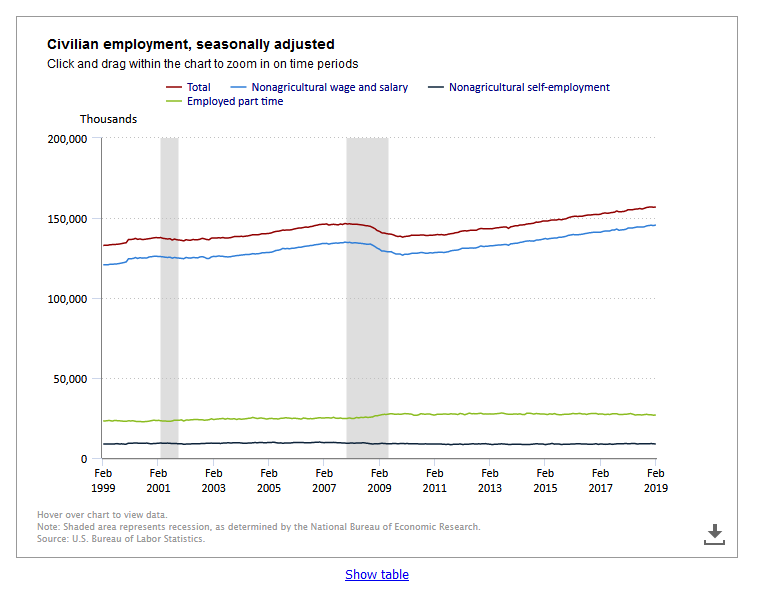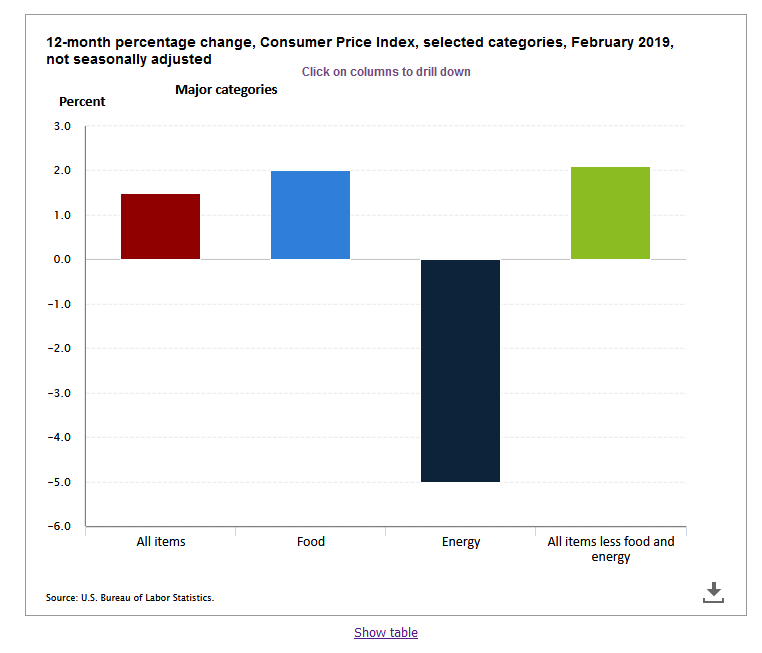Employment Blog March 2019
This employment blog is from the U S Department of Labor, Bureau of Labor Statistics. Nonfarm payroll employment changed little in February (+20,000), and the unemployment rate decreased to 3.8 percent. Employment continued to trend up in professional and business services, health care, and wholesale trade but declined in construction. Incorporating revisions for December and January, which increased nonfarm payroll employment by 12,000, monthly job gains averaged 186,000 over the past 3 months. This is summarized in Charts 1 and 2 below.


Employment continued to trend up in professional and business services in February (+42,000), in line with average monthly growth over the prior 12 months.
Health care added 21,000 jobs in February. Over the past year, health care employment rose by 361,000.
Employment in wholesale trade continued to trend up in February (+11,000). Over the year, the industry has added 95,000 jobs.
Construction employment fell by 31,000 in February, partially offsetting a gain of 53,000 in January. Employment in heavy and civil engineering construction decreased by 13,000 in February. Over the year, construction employment was up by 223,000.
Manufacturing employment showed little change over the month (+4,000). Over the prior 12 months, manufacturing had added an average of 22,000 jobs per month.
Employment in leisure and hospitality was unchanged in February, after rising by 89,000 in January and 65,000 in December. Over the year, employment in the industry increased by 410,000, mostly in food services and drinking places.
Employment in other major industries–including mining, retail trade, transportation and warehousing, information, financial activities, and government–showed little or no change over the month.
The Consumer Price Index for All Urban Consumers (CPI-U) increased 0.2 percent in February on a seasonally adjusted basis after being unchanged in January, the U.S. Bureau of Labor Statistics reported today. Over the last 12 months, the all items index increased 1.5 percent before seasonal adjustment. See Chart 3 below.

